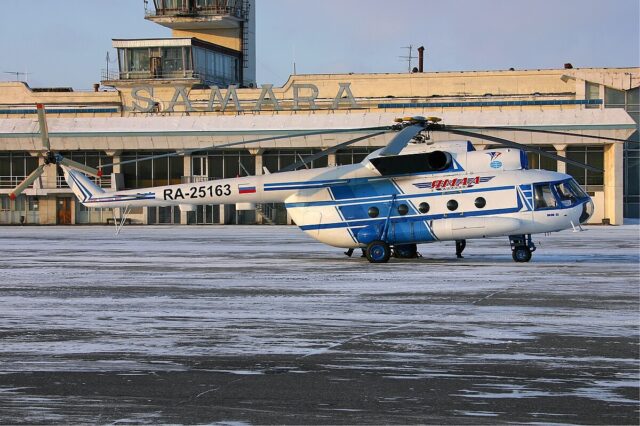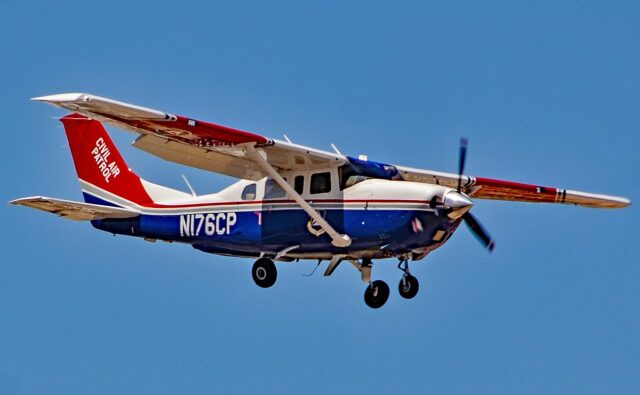Why does Russia put tyres on its fighter jets and bombers?

August 16, 2025

Russia has been putting tyres on aircraft for years to confuse seekers with image-matching software on attacking Ukrainian munitions. While it is unclear if they have successfully confused any missiles or drones, they are a low-cost precaution.
Easiest to destroy aircraft on the ground
Since 2023, Russia has been seen putting tyres on its aircraft while parked on the ground. But why? Some online commentators have laughed, saying it is a forlorn attempt to provide physical protection, but this does not appear to be the case.
In the air, a warplane can be the most sophisticated piece of military machinery ever made; on the ground, it’s about as useful and protected as a bus.

Russia first started putting tyres on its aircraft around the same time as Ukraine started using its land-attack variant of its domestic Neptune ground-launched anti-ship cruise missile. The Neptune is said to use an infrared imaging seeker. Ukraine’s British and French-supplied Storm Shadow/SCALP-EG air-launched cruise missiles also use imaging infrared seekers.
Tyres to disrupt imaging seekers of incoming missiles
In September 2024, The War Zone quoted Schuyler Moore, Chief Technology Officer of the US Central Command (CENTCOM), as saying the tyres are an attempt to “disrupt incoming attacks on air bases…”

TWZ noted that Moore had been a Chief Strategy Officer for US Naval Forces Central Command’s Task Force 59, which is responsible for experimenting with integrating new AI-driven and uncrewed capabilities in the naval operations in the Middle East.
Looks like Russia is putting tires not just on strategic bombers but also Su-34 bombers. https://t.co/Y5aiWx8ZHy pic.twitter.com/1rYkXflRvJ
— Rob Lee (@RALee85) September 8, 2023
She explained that the tyres are a “sort of classic unclassified example that exists is like a picture of a plane from the top, and you’re looking for a plane, and then if you put tires on top of the wings, all of a sudden, a lot of computer vision models have difficulty identifying that that’s a plane.”
Not only has Russia put tyres on the aircraft, it has also painted aircraft on the runway. These painted aircraft are also very obviously fake and have likewise drawn ridicule. While a conversation can be had about whether it has been effective, the United States Air Force was doing this long before Russia at its Bagram Airfield in Afghanistan.

Between November 2019 and April 2021, the US painted silhouettes of F-15s and F-16s in revetments. Around ten of these silhouettes remain visible on Google Earth imagery as of the time of writing. An earlier article by The War Zone claims these were used as decoys against visual identification by US adversaries.
No help during Operation Spiderweb
The many tyres on Russian Tu-95 and Tu-22 bombers were apparent during Ukraine’s highly successful Operation Spiderweb in June 2025. During that operation, around 20 Russian aircraft were hit, with many being catastrophically destroyed.

The Financial Times estimated Russia lost around 20% of its operational strategic bombers. This has greatly exacerbated Russia’s problems keeping its ageing fleet of strategic bombers operational. As China and the US move forward with next-generation stealth bombers, Russia has put its old Soviet-era Tu-160 variable-sweep wing bomber back into low-rate production.
Operation Spiderweb: This, exactly this, is justice.
— Igor Sushko (@igorsushko) June 11, 2025
A blow to Russia's sense of impunity.
New video released by the SBU, English subtitles. pic.twitter.com/rtYAS29Z9Z
The tyres apparently did little or nothing to save the Russian fleet, but these small drones were guided to the bombers using the open-source software, ArduPilot. Ukrainian President Zelenskyy said that each drone had a human pilot launching and commanding it remotely. The tyres might be able to confuse automatic image-recognition software, but not a human operator.
🛞 Here comes the very serious explanation: the real reason Russia lost a large part of its strategic aviation is that, over the last three years, they got too lazy to properly cover their aircraft fuselages with tires. pic.twitter.com/hvHIjxahOy
— Special Kherson Cat 🐈🇺🇦 (@bayraktar_1love) June 2, 2025
It is also known that Ukraine incorporated artificial intelligence (AI) into the drones to cope with any temporary loss of control signal. Ukraine trained the AI to identify the targets and guide them to the aircraft’s most vulnerable spots using Ukraine’s retired strategic bombers at the Poltava Museum of Long-Range and Strategic Aviation.
















